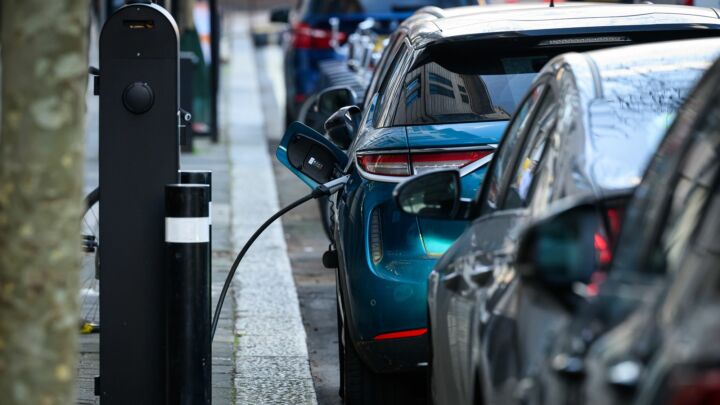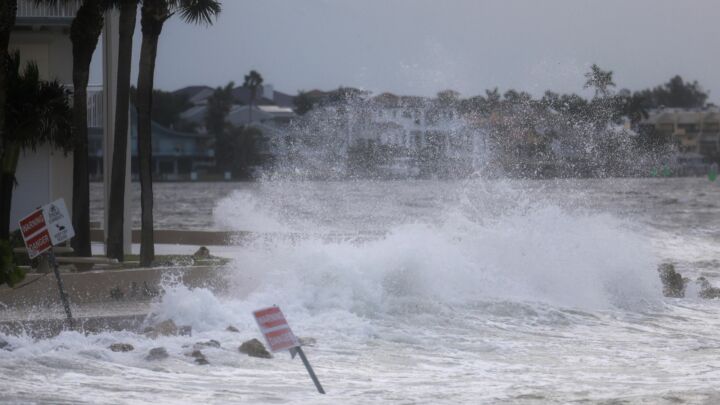Is it time to build on the green belt?
Buy your tickets now for the live spiked debate on whether new homes should be built on the green and pleasant lands that circle towns and cities.

Want to read spiked ad-free? Become a spiked supporter.
The vast stretches of countryside that encircle many towns and cities, from Cheltenham and Gloucester to Greater Manchester, have proved an enduring, distinctive feature of Britain’s civic heritage since the first pieces of green belt legislation were passed in the 1930s.
But now, with changing demographics prompting a hitherto unprecedented demand for new housing, the green belt’s continuing viability is being called into question by some. spiked, in association with Clark Mulder Purdie, is holding a debate in central London on the evening of Wednesday 30 April, where we’ll be asking: ‘Is it time to build on the green belt?’
There’s little doubting the urgency of the issue. Last summer, UK prime minister Gordon Brown announced plans to build three million new homes by 2020, providing affordable housing ‘not just for the few but the many’. To meet such a target Brown advocated the continued redevelopment of brownfield land – that is, abandoned or former industrial land – and launched proposals for eco-towns and villages involving zero- or low-carbon housing.
Since the announcement, however, much doubt has been cast on the government’s ability to realise its housing objectives without relaxing green belt legislation. One report from the Social Market Foundation estimated that Brown’s proposals could meet no more than one third of the proposed three million target. In the context of a two million shortfall in housing, the green belt no longer seems inviolable. Even Natural England, the public body responsible for protecting and improving the country’s natural environment, now says that a ‘mature re-examination of green belt principles [is necessary] to see if and how they can evolve to fit twenty-first century circumstances’.
So, should we unbuckle the green belt and let the developers build? Or is the cost of ‘concreting over the countryside’ too high a price to pay? At the spiked debate in London, speakers from both sides of the spectrum will battle it out. Here is a taster of their views.
Penny Lewis, editor of leading Scottish architecture magazine Prospect, says that while we certainly shouldn’t treat the green belt as sacrosanct, she is not against the idea of a green belt in principle: ‘It was introduced to provide for a human need, to provide access to the countryside for people living in built-up areas. I think at the time it was a legitimate decision to make.’ ‘However,’ she continues, ‘today the demands on society are different, we need more housing in the south east and we need to release more land for house-builders. In this context, we can’t treat a decision made half a century ago as sacred. If we need to build on the green belt, then we should.’
Michael Owens, an urban developer in London, is even less beholden to planning tradition. ‘The preoccupation with the loss of the green belt is misguided’, he tells spiked. ‘Much more at issue is the quality of the ideas that can inspire and inform a new wave of development. We need to be less defensive and more experimental.’
On the other side of the debate, Paul Miner, who is responsible for green belt policy at the Campaign to Protect Rural England (CPRE), argues that ‘[green belts] are one of the most powerful and effective tools we have for protecting the local environment. They have helped stop our cities from sprawling into the countryside and from merging into each other, and have also encouraged urban renewal.’
Miner emphasises the environmental value of the green belt, not in itself, but for us: ‘More can be done to encourage public access to and rewilding in our green belts, to help us move to a more sustainable future. But both the continued success of the green belt and the key to increasing its value in the future depend upon keeping it permanent and open – that is to say, not building on it.’
The fourth speaker – lecturer, writer and broadcaster Tristram Hunt – has also been keen to emphasise the importance of the green belt to civic and natural life: it stands as a vital bulwark against the endless suburban sprawl typical of American cities, he believes, arguing that to ‘think the solution to the housing problem lies simply with gutting the green belt is the politics of defeat. Sacrificing our natural and urban heritage might butter up the Home Builders Federation, but it will not make Britain a better place to live.’ (1)
What do you think? Buy your tickets for the debate now, and come along to get stuck in.
Tim Black is organising the spiked debate, ‘Time to build on the green belt?‘, in association with Clark Mulder Purdie. It will take place between 6.30pm and 8.30pm on Wednesday 30 April, at The Building Centre on Store Street in central London. Buy your tickets here.
(1) The green belt is no place for homes, Tristram Hunt, Guardian, 15 July 2007
Celebrate 25 years of spiked!
A media ecosystem dominated by a handful of billionaire owners, bad actors spreading disinformation online and the rich and powerful trying to stop us publishing stories. But we have you on our side. help to fund our journalism and those who choose All-access digital enjoy exclusive extras:
- Unlimited articles in our app and ad-free reading on all devices
- Exclusive newsletter and far fewer asks for support
- Full access to the Guardian Feast app
If you can, please support us on a monthly basis and make a big impact in support of open, independent journalism. Thank you.







Comments
Want to join the conversation?
Only spiked supporters and patrons, who donate regularly to us, can comment on our articles.